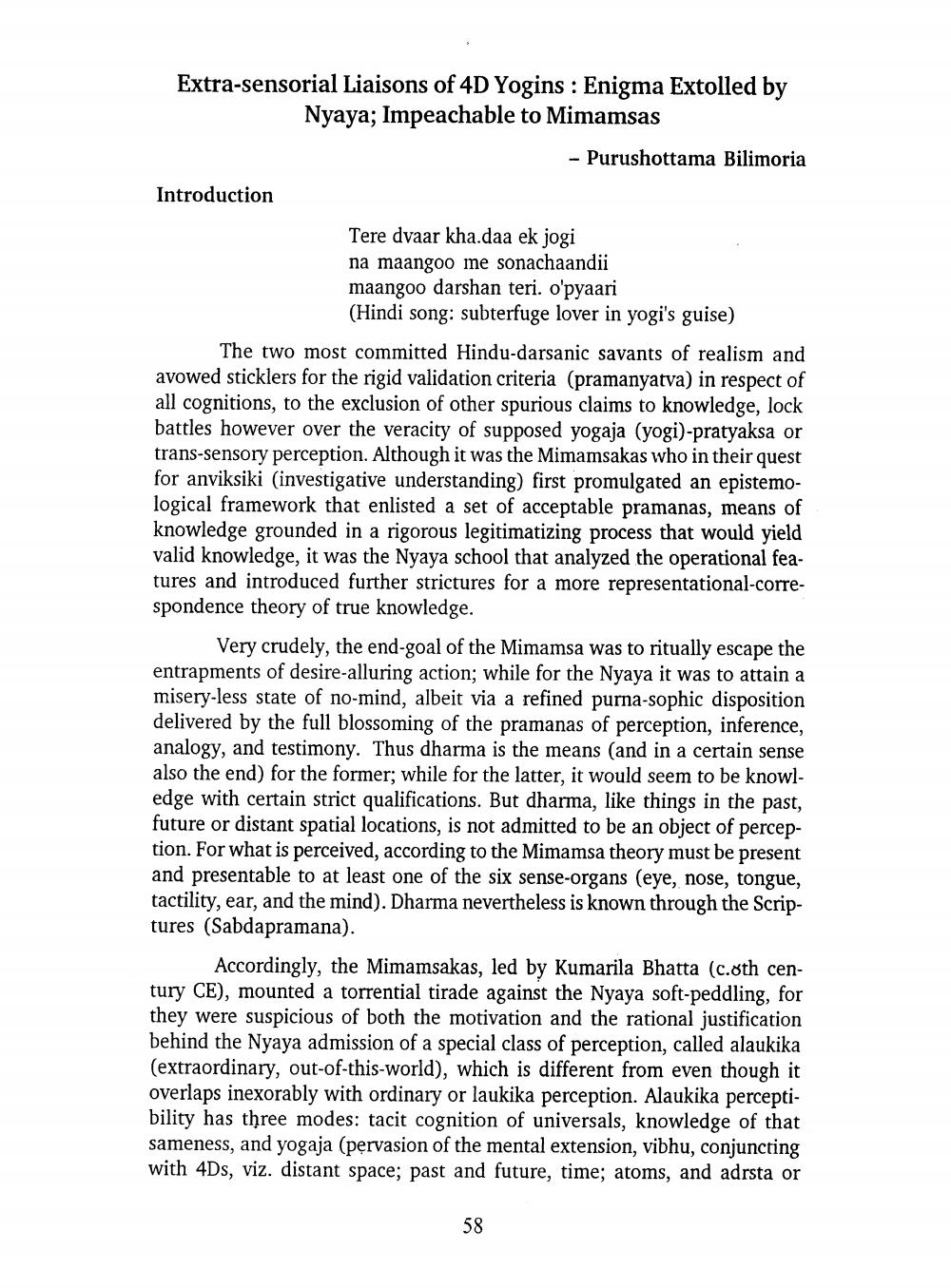________________
Extra-sensorial Liaisons of 4D Yogins : Enigma Extolled by
Nyaya; Impeachable to Mimamsas
- Purushottama Bilimoria
Introduction
Tere dvaar kha.daa ek jogi na maangoo me sonachaandii maangoo darshan teri. o'pyaari
(Hindi song: subterfuge lover in yogi's guise) The two most committed Hindu-darsanic savants of realism and avowed sticklers for the rigid validation criteria (pramanyatva) in respect of all cognitions, to the exclusion of other spurious claims to knowledge, lock battles however over the veracity of supposed yogaja (yogi)-pratyaksa or trans-sensory perception. Although it was the Mimamsakas who in their quest for anviksiki (investigative understanding) first promulgated an epistemological framework that enlisted a set of acceptable pramanas, means of knowledge grounded in a rigorous legitimatizing process that would yield valid knowledge, it was the Nyaya school that analyzed the operational features and introduced further strictures for a more representational-correspondence theory of true knowledge.
Very crudely, the end-goal of the Mimamsa was to ritually escape the entrapments of desire-alluring action; while for the Nyaya it was to attain a misery-less state of no-mind, albeit via a refined purna-sophic disposition delivered by the full blossoming of the pramanas of perception, inference, analogy, and testimony. Thus dharma is the means (and in a certain sense also the end) for the former; while for the latter, it would seem to be knowledge with certain strict qualifications. But dharma, like things in the past, future or distant spatial locations, is not admitted to be an object of perception. For what is perceived, according to the Mimamsa theory must be present and presentable to at least one of the six sense-organs (eye, nose, tongue, tactility, ear, and the mind). Dharma nevertheless is known through the Scriptures (Sabdapramana).
Accordingly, the Mimamsakas, led by Kumarila Bhatta (c.8th century CE), mounted a torrential tirade against the Nyaya soft-peddling, for they were suspicious of both the motivation and the rational justification behind the Nyaya admission of a special class of perception, called alaukika (extraordinary, out-of-this-world), which is different from even though it overlaps inexorably with ordinary or laukika perception. Alaukika perceptibility has three modes: tacit cognition of universals, knowledge of that sameness, and yogaja (pervasion of the mental extension, vibhu, conjuncting with 4Ds, viz. distant space; past and future, time; atoms, and adrsta or
58




